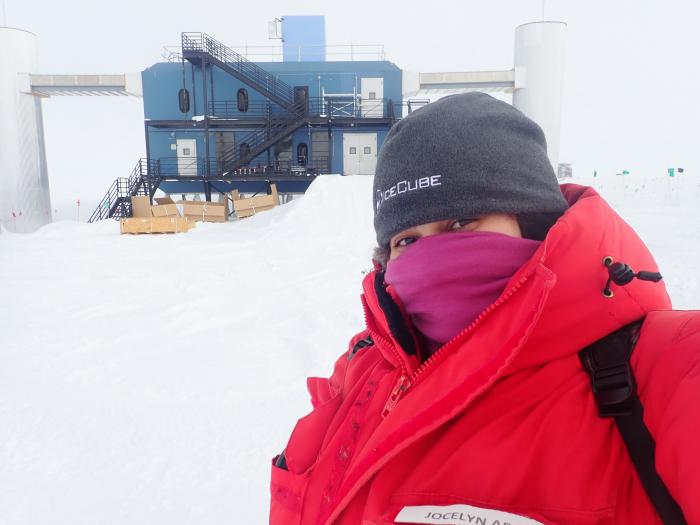IceCube In Person
Jocelyn update
This was my first day without altitude medication and I’m happy to report I am feeling great! I even walked a couple kilometers outside. I took A LOT of breaks to breathe, but hey, new personal record. I also mailed out the Jargie the Science Girl! postcards. They should take about a month to reach their destination. So if you requested one, just know they are on their way, and if you didn’t get to request one, just leave me your email in the comments and I’ll reach out to you. Postcards for everyone!
Science update
I visited the IceCube Lab for the first time today…and WOW! It is so much more majestic than in the photos. John (one of the winter-overs; he will be one of few people at the South Pole until December 2020!) and Jannes (a researcher working on SPICE core, more to come later) gave me the grand tour. On the first floor is the work space where Jannes and his colleagues are setting up devices that will be put up to 1,750 meters into the ice to better understand different properties of the ice. For example, Jannes’ device will measure the scattering and absorption of UV light as far as 1,600 meters deep. This is part of the IceCube upgrade project to better characterize the ice.
 Jocelyn standing in front of the IceCube Lab
Jocelyn standing in front of the IceCube Lab
 Work station in the IceCube Lab
Work station in the IceCube Lab
On the second floor, is the command center and also where all of the electronics for the DOMs (Digital Optical Modulars; detectors that are frozen beneath the ice detecting small subatomic particles called neutrinos) are located…cables upon cables upon cables. Each DOM hub has 15 red cables plugged in to keep them “online.” I’m wearing a lab coat that is specially made with copper threading throughout. The south pole is at 1% humidity. The extreme dryness causes more static electricity build up, so scientists wear these lab coats to prevent themselves from shocking any of the computers.
 Jocelyn wearing a coat with copper to prevent static electricity shock to the computers
Jocelyn wearing a coat with copper to prevent static electricity shock to the computers
Before I headed back to the station, cargo arrived at the lab! This turned out to be very interesting to watch and help with. Giant crates got forklifted to the doors of the lab, where every scientist waited with drill in hand. As soon as the crate was set down, the scientists raced to open the crate and unload boxes of equipment that they shipped to the lab in August! Then they repeated the steps with the next crate of cargo, working in -31 degree F weather. Amazing!
 Cargo arriving at the IceCube Lab
Cargo arriving at the IceCube Lab
Talk soon, friends. Jocelyn


Comments
Add new comment